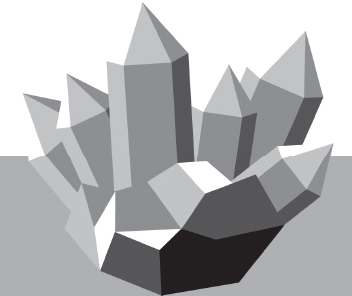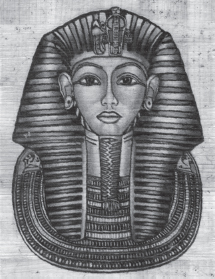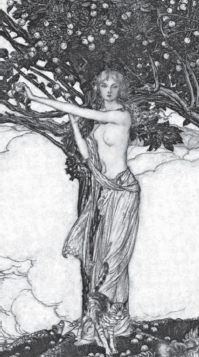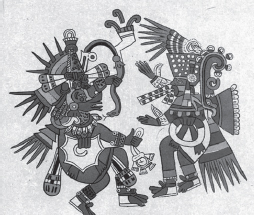

Bearing in mind that crystals were known, used and revered for many years before the birth of Christ, it is not surprising that a wide variety of legends and folklore have grown up around them.
Perhaps the most famous of these legends concerns the breastplate constructed for Aaron, the first High Priest of Jerusalem. According to the Bible (Exodus 28: 15-20) this breastplate incorporated the use of twelve precious stones (or crystals). These were sardius (carnelian), topaz, carbuncle, emerald, sapphire, diamond, ligure, agate, amethyst, beryl, onyx, and jasper. (Note that the names of some of the stones used have changed.) Each stone—thought to measure more than two inches—was to be engraved with the name of one of the twelve tribes of Israel. The very detailed instructions for the creation of this breastplate indicate that it must have been amazingly beautiful—and extremely heavy.

The legend of the Kalpa Tree comes from India. Described as an offering to the gods, this “tree” was composed entirely of precious stones, including a trunk made from topaz, diamond, and cat's eye, with sapphire roots, shoots made from emerald, leaves of coral and green zircon, and ruby fruits. This tree was probably the inspiration for the many “crystal trees” currently available in jewelry stores and rock shops.
According to the Bible, the New Jerusalem was built entirely of precious stones. The book of Revelations (21:18-21) says that its walls were made of jasper, streets of gold, and it had twelve gates, each made of a huge pearl. Other stones incorporated in the foundations of the city include jasper, lapis lazuli, chalcedony, emerald, sardonyx, carnelian, peridot, beryl, topaz, chrysoprase, zircon, and amethyst.
Some authorities claim that a giant garnet carbuncle, set high up in the center of the boat, illuminated Noah's Ark. Spanish astrologers at one time used the garnet to illustrate the Sun, and, according to the Koran, a carbuncle lights up the fourth heaven.
Small quartz crystals were thought by the Japanese to be the congealed breath of the White Dragon. The Greeks believed that quartz was permanent solidified ice, while aborigines thought it was made of falling stars.
Early Britons gave quartz pebbles the name “star stones” and believed them to have healing powers, particularly if they were collected from a stream or running brook.
An ancient Indian legend suggests that pearls were dewdrops that fell from heaven and were caught by shellfish. The Arabs shared this belief, claiming that this event occurred in April, while the Hebrews thought that pearls were the tears shed by Eve when she was expelled from the Garden of Eden.
Greek legend has it that the god Bacchus was annoyed with mortals and vowed to have the next human he encountered torn apart by his tigers. En route to pray at the temple of Diana, the young girl Amethyst was the next mortal Bacchus met. When the girl screamed to Diana to protect her, the goddess turned her into a pillar of quartz. Overcome by remorse, Bacchus poured a libation of wine over the stone—thus producing the purple color by which amethyst is traditionally known.
Lepidolite is known as the peace stone and is said to provide the owner with a guardian angel. It is thought to have a particularly strengthening effect on women.
Red stones are sometimes considered to possess particularly strong powers. Star rubies—that is, crystals with inclusions forming the shape of a star—are particularly venerated in the Orient. The spirits attuned to the star have names that translate as Faith, Hope, and Destiny and are thought to bring good fortune to the owner of the stone.
Lapis lazuli was regarded by the Ancient Egyptians and the Sumerians as the Stone of Heaven and sacred to the gods. The hair of the god Ra was said to be composed of the crystal. In Christianity the stone was used to symbolize the purity of the Virgin Mary. It was also believed that when God gave the Ten Commandments to Moses they were written on tablets of this blue, gold-flecked stone.

A cardinal's ring is always a sapphire, as decreed by Pope Innocent III, because “this stone possesses qualities essential to its dignified position as the badge of Pontifical Rank and a Seal of Secrets.” Solomon was thought to use the stone as a means of communicating with God. It is probable that many references to sapphire in ancient texts are actually referring to lapis lazuli.
There are innumerable green crystals, but jade has always been regarded as one of the most precious. In fact, this crystal comes in a wide variety of colors but it usually identified with green. The stone has been used in China since Neolithic times and was believed to be the solidified semen of a dragon. In South America, jade was sacred to the goddess of storms, Chalchihuitlicue, while the Aztecs and Mayans used it for funeral masks.
In ancient cultures, peridot was often mistakenly regarded as an emerald. It has always been used for making amulets and talismans and was thought to be effective in turning around difficult situations. Early Christians regarded it as the stone of the Apostle Bartholomew, representing truth and miracles.
Rose quartz has always been regarded as a gentle stone, producing tranquility, love, and reconciliation. It is known to have been in use since at least 2500 BC. The Romans and Egyptians used powdered rose quartz in cosmetics in the belief that it could prevent wrinkles and produce a flawless complexion.
Rhodochrosite was treasured by the Incas because they believed that it contained the blood of their ancestral rulers. For this reason, it is sometimes known as the Inca rose. It is said to hold the power of Venus and to strengthen the ties of love.
Citrine was at one time the blanket description for all yellow stones. It has also been known as Brazilian topaz, false topaz, and a variety of similar names. Legend has it that this crystal was used on Atlantis as a powerful healing tool, particularly connected with the sun. In fact, the citrine is often known as the sunstone and is known to reject any form of negativity.

Norsemen and Vikings believed that amber was formed from the tears of the goddess Freya, when Odin left her to travel the world. The Greeks had similar beliefs, but their claim was that amber represented the tears of the Heliades when Zeus has turned their brother Phaeton into a poplar tree. Yet another tearful explanation for this crystal came from India where it is thought to be the fossilized tears of birds. The ancient Romans had other ideas, believing that amber was formed from lynx urine—though Sudine, writing in 240 BC, referred to amber coming from a lynx tree.
In Ancient Egypt, the carnelian—known as the “Blood of Isis”—was thought to provide protection during astral travel. This was achieved by staring into the crystal after placing it in front of a lighted candle. Placed on the throat of a mummy, a carnelian amulet engraved with the 156th chapter of the Book of the Dead was said to ensure rebirth into the after-life. The famous “Eye of Horus” carnelian amulet, said to offer protection against the evil eye, is still popular in many parts of the Middle East.
Tiger's eye was used in Ancient Egypt in at least 3000 BC and was sacred to Ra, the sun god. It was also used as eyes in the statues of various Egyptian and Assyrian gods. The Egyptians believed that this crystal enabled the owner to see anything and everything, even through walls and behind closed doors. Roman soldiers carried it into battle to ensure their courage. In Japan, it was thought to guarantee longevity, as the tiger was supposed to live for 1,000 years. The Indian belief was that tiger's eye created wealth and prevented the wearer from losing money.
Smoky quartz has long been believed to be a protection against bad luck, particularly in the Alpine regions. It can still be found carved into the shape of a cross and hung on bedroom walls to repel evil. This particular form of quartz is said to help the wearer cope with problems and negative situations.
In South America, both the Aztecs and the Maya regarded obsidian as sacred. The Aztec's sacrificial knife was made from this stone and it was regarded as the bringer of life and death. The Mayans often used this crystal to make magic mirrors consecrated to the god Tezcatlipoca. John Dee, the English Elizabethan seer, is reputed to have had a similar mirror. In North-Central California, boys and girls endured an initiation ceremony, which included being stabbed with obsidian knives. The crystals known as Apache Tears are actually obsidian; the name originated with the belief that the earth wept whenever an Apache warrior was killed.

Sardonyx was used in India and Persia to protect against the evil eye, in addition to making the wearer invisible if the stone was carved in a particular style. In Christianity the crystal symbolized the Apostles James and Philip, representing their honesty and sincerity. For the Romans, sardonyx was sacred to Mars, the god of war. In the Middle Ages it was worn to protect against grief and to increase confidence. According to St. Hildegard, the devil hated the purity of the sardonyx and would flee from it.

These are but a selection of the many myths and legends that have become associated with crystals over the years. We hope these brief accounts will encourage you to investigate further. It is a fascinating study.